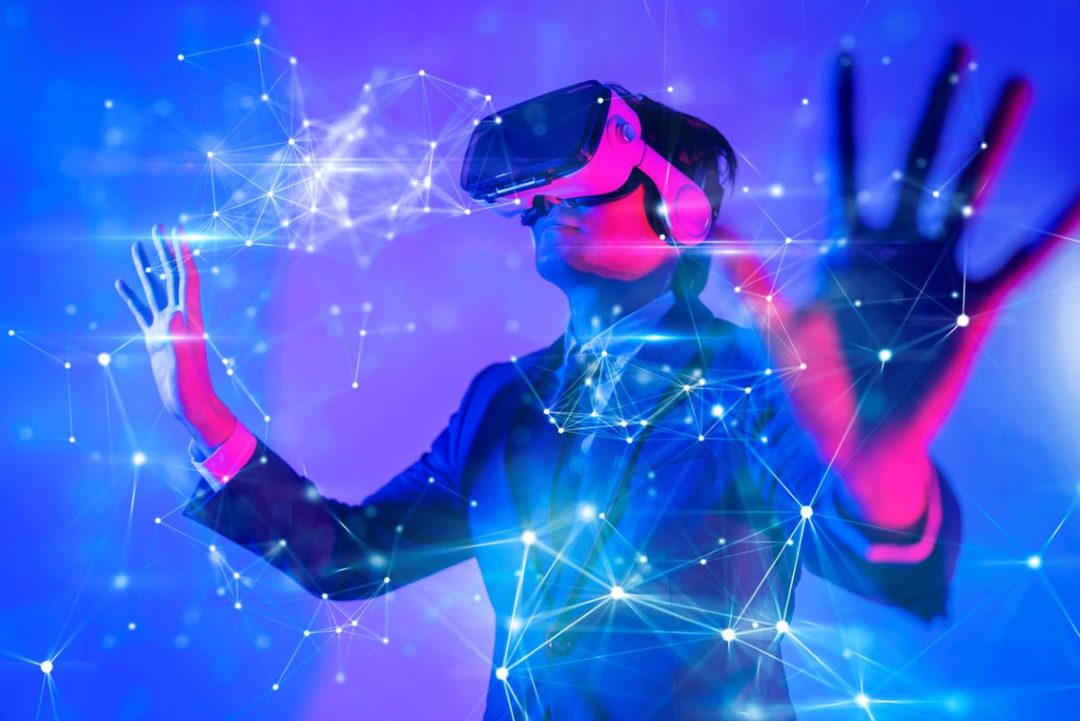
Visit Our Sponsors |
|
|
|
|
|
|
|
|
|
|
|
|
|
|
|
|
|
|
|
|
|
|
|
|
|
|
|
|
|
|
|
|
|
|
|
|
|
|

Photo: iStock.com/Thinkhubstudio
Augmented reality (AR) is an extension of the environment in which the user is, enriched in real time with texts, graphics and multimedia contents. Its goal is to enhance the physical world with meaningful and relevant information. Since the development of AR, it has mostly been used for entertainment like in the popular mobile game, Pokemon GO, or for marketing like in the IKEA Studio App. But gradually, we have witnessed the integration of AR across various industries, including manufacturing.
Manufacturing floors and warehouses can be dangerous and often confusing places to be in. The increasingly complex, AI-powered machinery requires on-site experts with more and more specialization to train warehouse staff and/or repair the machines, if necessary — something which isn’t readily available, and quite expensive. This is where augmented reality comes into play, supporting remote technology, maintenance, and collaboration.
While implementing AI and AR technology can get expensive for businesses, the return-on-investment on their practical uses cannot be ignored. The ROI presents itself in the form of operational efficiency, where machines use artificial intelligence to self-diagnose for any operational issues which can be easily presented to the ground staff through augmented reality. AI and AR also help reduce or even altogether prevent machine downtime by seamlessly scheduling the workflow. They can prevent machine overuse through self-diagnostic alerts, instantly show machine records and stats, and help maintain the overall well-being of the machine.
Some practical uses of augmented reality in the manufacturing industries include:
1. Active training & upskilling. The technical staff can observe the smart machines through their phones or tablets, hover over a particular machine and be greeted with an animation to help in learning to use it. There can also be a tutorial follower that ensures you complete all the steps during the maintenance of the machine. Similarly, if a machine is to be repaired by an on-site expert, they can be presented with the operational stats of the machine instantly, saving time and energy that would otherwise be lost doing manual check-ups.
2. Digital work instructions. Similarly, AR work instructions guide workers through standardized processes. Instead of a worker reading about three actions at once with only one picture to demonstrate it, AR projects work instructions directly onto the work surface, guiding workers one step at a time. Therefore, all focus is on the quality of that one action, significantly reducing time, errors, and cognitive load on the worker. Along with that, AR makes writing digital work instructions easier. By adding visual and audio cues into the steps, less text is needed.
3. Quality assurance. Inspection and verification are extremely important to ensuring quality. However, it’s still common that inspections don’t take place until the end of a process. With guided AR solutions, work instructions can incorporate quick inspections at any step without hindering cycle time.
4. Ergonomics. Because augmented reality displays digital overlays onto the surfaces around you, it can adapt to your needs. Not everyone works in the same setting. Adjustments are needed for the type of work you’re doing, where you’re doing it, and how much you’re doing at a time. In ergonomics, these are defined as physical, cognitive, and organizational needs. Together, ergonomics largely impact the way your workers interact with their jobs.
The rise of automation also led to a rise in available process data. However, manual processes are still relevant, and manufacturers rarely aggregate any new data from them. Augmentation makes both processes work together. AR technology allows manufacturers to access manual processes and automated data at the same time. It continues to collect cycle times and defects, but adds more points of reference. For example, augmented work instructions track step times, the exact actions that led to a defect, and real-time operational metrics. Altogether, this added manual data provides a broader picture of factory functionality, showing exactly when and where issues occur.
While there are many benefits to implementing AR and AI technology in manufacturing, we have to understand that such deep automation cannot work all across the globe. In countries where machines are extremely expensive and businesses can’t have people goofing up on the floor, it makes sense to apply AI and AR to the warehouse processes. But, in the case of developing countries where labor is cheap, it will be a mammoth task to convince businesses to put into practice the kind of technology that would burn a hole in their pocket and take an extremely long time to educate and train the workers. Not to mention, it’s quite possible that some parts required to maintain and repair the machines might not be readily available, which would negate the ROI altogether.
Edmund Gair is co-founder of Viatick Pte Ltd.
RELATED CONTENT
RELATED VIDEOS
Timely, incisive articles delivered directly to your inbox.






